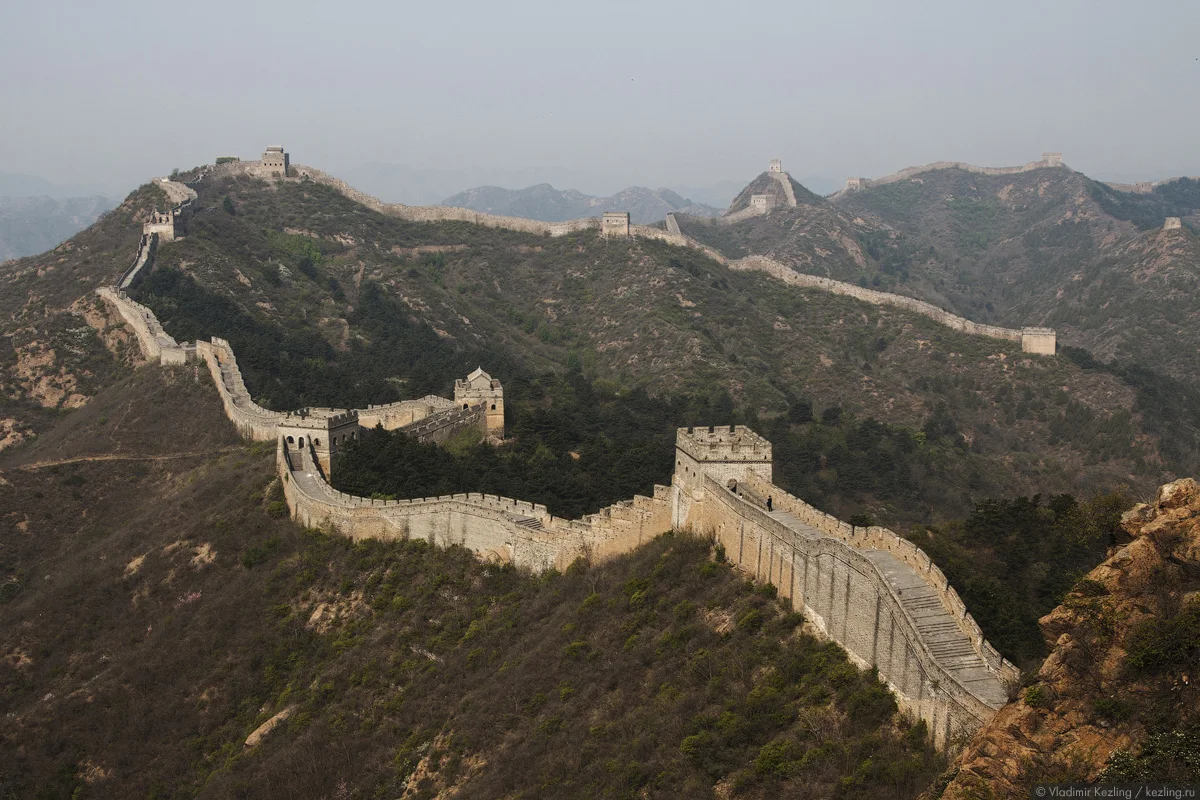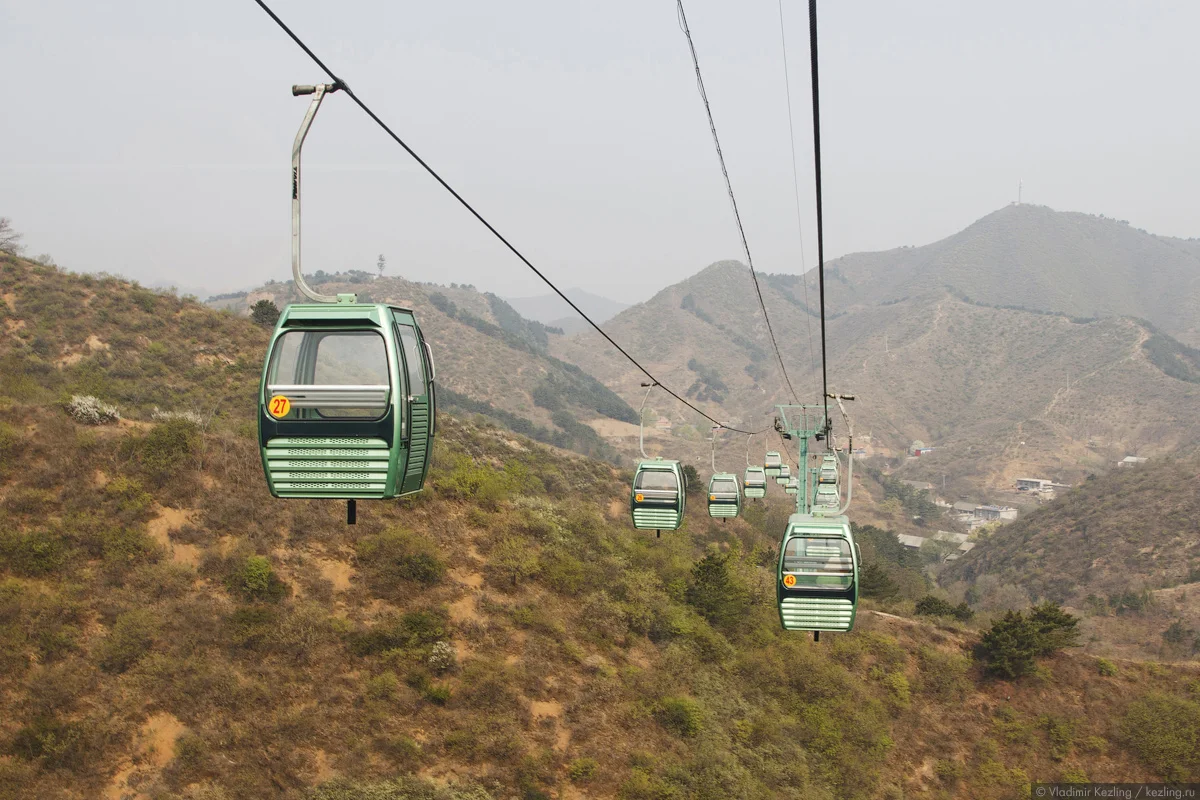The Jinshanling Great Wall is a section of the Great Wall of China (慕田峪长城) located in the mountainous area of Luanping County, Chengde, Hebei Province, 125 km northeast of Beijing. This section of the wall is connected to the Simatai section to the east. Some distance to the west is the Mutianyu section. Jinshanling was built in 1570 CE during the Ming dynasty.
 |
| Jinshanling Section Great Wall |
The Great Wall of China is one of the greatest and at the same time the most senseless structures of mankind. Despite its grandeur and engineering perfection, it never fully fulfilled its main fortification function - it was simply impossible to maintain its combat effectiveness along its entire length. The Great Wall reached its greatest grandeur by the 17th century - during the reign of the Ming dynasty. Taking into account all the branches, its length reached 8850 (in words: eight thousand eight hundred and fifty) kilometers. It is these areas that have been partially preserved to this day. If we count all the sections of the wall that were erected by the Chinese in two thousand years, then we get a fantastic figure at all: 21196 kilometers. In any case, it is these data that appear in the results of the five-year study of the wall initiated by the Chinese administration, published in the summer of 2012. This, by the way, is more than half the length of the earth's equator. I managed to visit two preserved sections of the wall - Jinshanling and Mutianyu, there will be a separate story about each of them.
The alarm went off at half past four in the morning. Half an hour later, I was going downstairs to the first floor of the hotel with my suitcase. Surprisingly, my last day in China began exactly as we agreed with the owner of a travel agency the day before: two young guys, a guide and a driver, were waiting for me downstairs. A huge Chinese sedan was parked nearby, clearly battered by life, but retaining the touches of its former gloss. Just in case, we once again discussed the upcoming program with the guide - first we went to the Jinshanling section of the Great Wall of China, located 150 kilometers from Beijing, then we had to visit another section - Mutianyu, after which we planned to get to Beijing airport by five o'clock in the evening where I had to start the hard way home.
 |
| Jinshanling Section Great Wall |
The first sections of the wall appeared between the 8th and 5th centuries BC. At that time, China was a set of independent feudal kingdoms, each of which erected fortifications along its borders, hoping to protect itself on the one hand from the attacks of other Chinese rulers, on the other, from a common external enemy - the Xiongnu nomads, who periodically made devastating raids from north.
At the end of the 3rd century BC, the Chinese kingdoms were united under the leadership of the Emperor Qin Shihuang-di (the very one for whose burial complex the Terracotta Army was created). As a sign of unity, all the fortifications that once divided the former kingdoms were demolished. At the same time, the northern sections of the walls, which were supposed to provide protection from Mongol nomads, were combined into a single fortification system and largely rebuilt. What can I say, the project was grandiose. No one considered the human losses necessary to achieve the result - modern researchers agree on the number of people killed in construction from several hundred thousand to a million people. Most often, the bodies were walled up directly into the wall - in fact, the wall became the longest cemetery in the world. At each site, construction was carried out from the material that was available. In the mountains the wall was made of stone, in the plains it was earthen.
 |
| Jinshanling Section Great Wall |
Military garrisons were located on most of the wall, and through the system of watchtowers it was possible to spread information about the attack at a lightning speed for those times.
Over the next thousand years, the Great Wall was maintained in combat condition, periodically reconstructed during the times of some dynasties. In the XI-XIII centuries, during the reign of the Liao and Jin dynasties, several new sections of the wall were built, much further north of the existing one.
During the reign of the Ming dynasty, a new stone wall was built, partially repeating the outlines of the ancient fortifications. The fortification system, which included about 25 thousand towers, stretches for almost nine thousand kilometers - from the Liaodong Bay of the Yellow Sea to the distant Gobi Desert. Again, as in ancient times, construction was associated with huge human casualties - the number of those killed again went to hundreds of thousands of people.